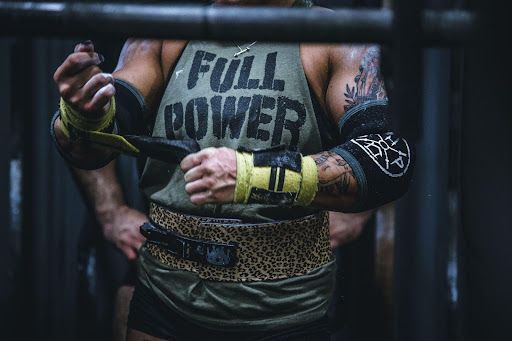

Powerlifting vs. bodybuilding remains a heated debate in training programs. While the two terms are often used interchangeably and appear remarkably similar, they are quite different sports. Our comprehensive guide will explain the similarities and differences between the two. Read on to find out various lessons bodybuilders can get from powerlifters and what they can teach powerlifters.
Powerlifting vs. Bodybuilding: Differences
If you would like to advance your lifting career, you might opt to specialize in either powerlifting or bodybuilding. To understand which would suit you better, you need to know the differences between the two.
The main difference lies in the end goal of the training. Powerlifting focuses on increasing maximal strength, using movements like deadlift, squats, and bench presses. On the other hand, bodybuilding seeks to maximize muscle growth and is less concerned with how much weight you lift. Other differences include:
Exercise Selection
Although both powerlifters and bodybuilders rely on weight training to boost strength, muscle mass, flexibility, and overall performance, the exercises differ.
For powerlifting, the three core exercises are deadlifts, squat, and bench-presses. So, any exercise a powerlifter engages in should have a direct impact geared to improve these three exercises.
In contrast, there is less emphasis on the powerlifting movements for bodybuilding. Instead, bodybuilding uses isolation exercises that target different muscle groups, including the back, biceps, shoulder, glutes, triceps, and hamstrings.
Training Splits
It refers to workouts structure during the week. When powerlifting, the training split is broken, with each exercise having its days. For example, there will be a squat day with deadlift accessories, deadlift day with squat accessories, etc.
For bodybuilding, the splits are structured according to muscle groups. A day’s workout will include several muscle groups, e.g., a day for the lower body and another for the upper body.
Competition
Although both are competitive sports, the two are governed by different bodies. For powerlifters, they are under the International Powerlifting Federation, while the International Bodybuilding Federation governs bodybuilders.
When competing in powerlifting, the goal is to lift the most weight for one repetition. You are given three attempts to reach your maximum capacity during the competition. To win, you need to add up the heaviest deadlift, squat, and bench-press attempt to get a powerlifting total.
On the other hand, there are different physique categories when competing in bodybuilding. There is fitness, bodybuilding, bikini, and wellness. There are judges who will assess your “look” and make a decision based on the acceptable muscle mass and required posing routines.
Technique
Neither powerlifters nor bodybuilders can risk injury since it could put them out of training for weeks or months. Therefore, both focus on implementing proper exercise techniques. However, during training, powerlifters adopt lifting techniques that limit the range of motion. In comparison, bodybuilders focus on techniques that increase the range of motion.
During powerlifting training, you need less range of motion to move the weight. Therefore, every angle of movement is analyzed to ensure you reduce the range of motion to lift more weight. Thus, most powerlifters arch their back when training.
The opposite is true for bodybuilders. Since their goal is to build muscle mass, they use full-range motion to stress the muscles. Thus, it will result in greater muscle damage and hence muscle growth.
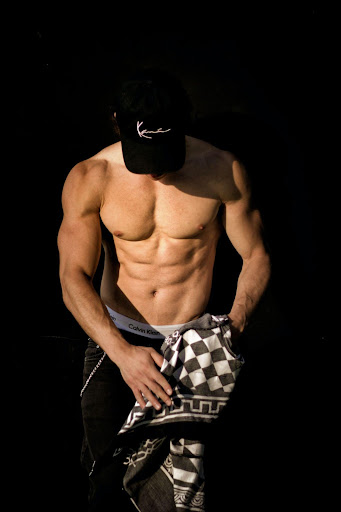
Differences between Powerlifting and Bodybuilding Workout Plans
Powerlifting and bodybuilding are geared towards different end goals. Therefore, the two use different workout plans. Here is an in-depth guide on the various workout plans:
Training Plans
For bodybuilding, the base training style is hypertrophy-focused. That is, it focuses on the ongoing development of muscle size. Hypertrophy training will influence the sets, exercise selections, repetitions, and loads to bring muscle groups close to fatigue. You can target a specific muscle group or region and stimulate targeted growth by bringing muscles close to fatigue.
On the other hand, powerlifting focuses on absolute strength. Thus, powerlifters concentrate on strength training. Strength training will influence the sets, exercise selections, repetitions, and load to maximize the potential weight you can lift. It involves developing movement patterns as well as refining techniques instead of fully fatiguing muscles.
Sets and Repetitions
Although bodybuilding and powerlifting follow progressive overload, they use different approaches from different angles. For example, the progressive overload will come from an increased total volume in bodybuilding. That is, from strategically increased sets and repetitions to stimulate muscle growth.
In bodybuilding, the sets and repetition are usually a 1-repetition maximum of between 60 and 85%, with 2-4 sets of 8 to 12 repetitions. However, the true hallmark of success during the training is proximity to muscular fatigue. The number of sets and repetition progresses slowly but surely to target the muscle group and ensure it burns out.
On the other hand, in powerlifting, progressive overload is achieved by periodizing training blocks like changing training variables over time. It starts with higher volumes, and later more accessories are added to work over. The accessory movements aim to attack weak links. The exercises can progress from a 1 65% repetition to a 90+ to reach the peak.
Core Exercises
For bodybuilding, the exercise selection should aim to reach hypertrophy to stimulate the muscles to grow. Bodybuilders engage in exercises with a high ability to generate mechanical tension. It narrows down to how hard the muscle can work in isolation rather than being concerned about skill-based movement and stability.
Powerlifting training relies on the three competition lifts and their different variations. Powerlifting needs full-body strength, and thus, the athlete must track the strongest and weakest points in their performance to train effectively and avoid hitting plateaus.
Similarities between Powerlifting and Bodybuilding Workout Plans
Despite the differences highlighted in the section above, there are some shared similarities between powerlifting and bodybuilding. The first similarity is that both powerlifters and bodybuilders go through a peaking phase. For bodybuilders, the peaking stage is when a beginner trainer begins a bulking program, where they eat well and check their calories as they lift with intensity.
Nonetheless, the peaking phase is not long-term and is neither a lifestyle; it is just a phase where a bodybuilder aims to gain muscle as much as they can. For a powerlifter, the peaking phase is when a trainee focuses on bringing core lifts. During this period, the beginner eats enormous foods and lifts intensely, similar to a bodybuilder during the bulking program.
The second similarity is incorporating experimentation in their regimens. As a beginner in bodybuilding or powerlifting, you will need to experiment with what can work for you and what cannot. Thus, there is a period when they both experiment with training and nutrition to achieve their goals.
Third, both bodybuilding and powerlifting need mental preparation. In bodybuilding, you need to ensure you have the mental capacity to keep up with workouts and keep going even when running on an empty tank. For powerlifters, mental preparation means building a mindset that you can nail the hundreds of pound deadlift irrespective of challenges that may come your way.
Lastly, both powerlifting and bodybuilding use the idea of recovery and adequate sleep. Since both involve powerful workouts that break down muscles, healing and recovery are important to achieve your goals.
What Aspects of Powerlifting Plan Bodybuilders Should Take Advantage Of:
Although you have decided to settle on bodybuilding, you shouldn’t be so black and white in your training. There is a lot that you, as a bodybuilder, can learn and benefit from powerlifting plans.
Do Not Rely Too Much on Isolation Exercises
BodyBuilding relies on hypertrophy and focuses on exercises that isolate muscle groups. However, you needn’t rely solely on isolation movements. A common misconception is that a non-isolation workout will lead to losing muscle, which is false. You can also engage in main compound exercises to achieve progressive overload.
Incorporate Off Seasons
Bodybuilders are afraid at the mention of being fat, which most powerlifters are famed for. Off-seasons help with bodybuilding as you let your vanity rest for a while and be in a caloric surplus during your off-training days. During the offseason, being a little heavier will motivate you to train heavier and engage in the same workouts but use heavier weights to get more muscle.
Using the Right Techniques
Unlike powerlifting, which focuses on three main training exercises, bodybuilders do different exercises in different sets and repetitions. However, bodybuilders often face the challenge of using wrong techniques and insufficient knowledge on how to brace correctly.
Bodybuilders can learn to embrace the proper techniques and do different gym exercises comfortably from powerlifters. Powerlifters arch their backs for pain-free and effective training sessions when performing their exercises. A lesson bodybuilders can make use of.
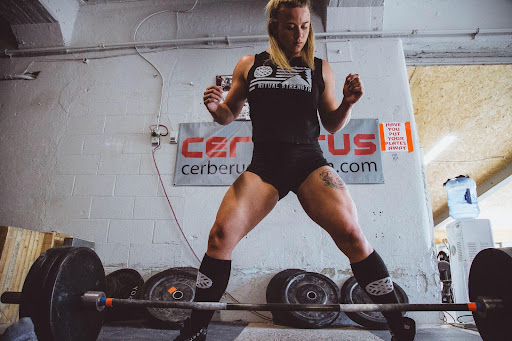
What Aspects of Bodybuilding Plan Powerlifters Should Take Advantage Of
Powerlifters, too, can learn a lot from bodybuilding plans. They can learn how to:
Add Some Muscle
Powerlifters need some periods where they can train like bodybuilders since more muscle translates to better leverages. Additionally, with more muscles, powerlifters increase their maximum strength potential.
To be an exceptional powerlifter, you need to do basic things and learn powerlifting techniques as your foundational work. However, following the powerlifting program is the bare minimum, and it takes more to achieve the upper echelons.
Try Some Cardio
Most powerlifters focus on the big three exercises and overlook the importance of cardio in their training regime. Cardiovascular exercises for powerlifters can help improve recovery between sets and sessions, increase work capacity and improve your mental game.
When incorporating cardio in your workouts, start with thirty-minute sessions. Besides benefiting your powerlifting career, cardio will help improve your quality of life and reduce the chances of health complications.
Be Dedicated
In the powerlifting vs. bodybuilding debate, one thing remains clear: bodybuilders outshine powerlifters in their dedication. They are consistent and hardworking, a trait that powerlifters can learn from bodybuilders.
Most powerlifters leave their commitment in the gym as they leave and focus less on their calories and nutrition. Nutrition is a significant part of training as your calories significantly affect your well-being and progress.
There is more to training than powerlifting and BodyBuilding hybrid. Changing your training routine and incorporating new exercises can help avoid hitting a plateau.
Take Away
Despite bodybuilding and powerlifting being resistance training sports, they are quite different. The goals for training differ, and so does the competition. Our comprehensive guide above has explained the similarities, differences, and lessons bodybuilders can get from powerlifters and vice versa. Try tweaking your training program and see how it works for you!






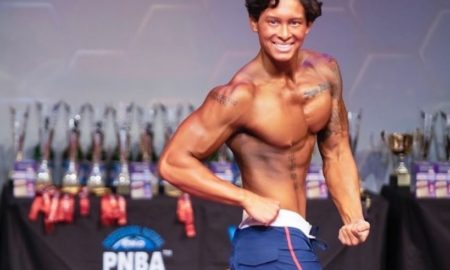
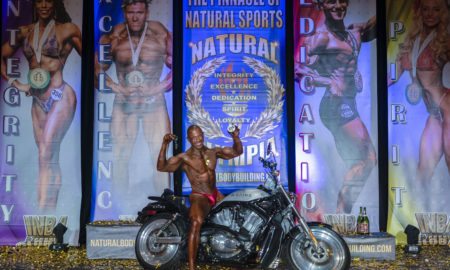














You must be logged in to post a comment Login